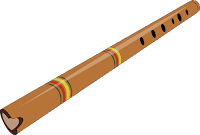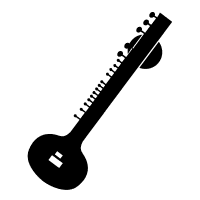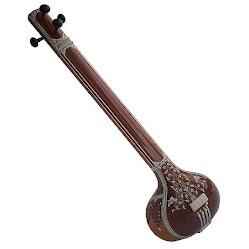Myths about teaching can hold you back
Learn why
Lesson 5 of 10
- Year 9
Lesson 5 of 10
- Year 9
How does Indian classical music make you feel?
These resources were made for remote use during the pandemic, not classroom teaching.
Switch to our new teaching resources now - designed by teachers and leading subject experts, and tested in classrooms.
Lesson details
Key learning points
- In this lesson, we will explore North Indian classical music, and how this is passed down from generation to generation. We will understand how certain rags evoke emotions and how to improvise our own melodies in alap and jhalla sections.
Licence
This content is made available by Oak National Academy Limited and its partners and licensed under Oak’s terms & conditions (Collection 1), except where otherwise stated.
7 Questions
Q1.What are layers in music?
What are layers in music?
The key of the music.
The structure of the piece.
Q2.What does 'polyphonic' mean?
What does 'polyphonic' mean?
Multiple layers playing in unison.
One instrument playing a solo.
Q3.Which note is sharp in the A harmonic minor scale?
Which note is sharp in the A harmonic minor scale?
C
F
Q4.What is a chromatic passing note?
What is a chromatic passing note?
A note that finishes the piece in a different key.
A note that is played really quickly before the piece starts.
Q5.Why is it important to write a melody in stepwise motion?
Why is it important to write a melody in stepwise motion?
Because the melody needs to play every note of the scale in order.
Because the notes need to match the steps of the tango dance.
Q6.What is electrotango style?
What is electrotango style?
A fusion of jazz and rock music.
A fusion of traditional percussion instruments and string parts.
Q7.Which of the following three chords were given in the tango chord progression?
Which of the following three chords were given in the tango chord progression?
C, Dm and F.
D, Bb and E.
7 Questions
Q1.What is the other name for North Indian classical music?
What is the other name for North Indian classical music?
Carnatic
Raga
Q2.What is an oral tradition?
What is an oral tradition?
When you learn music from a score.
When you learn music from videos.
Q3.What instrument is this?
What instrument is this?

Sitar
Tabla
Q4.What instrument is this?
What instrument is this?

Bansuri
Tabla
Q5.What instrument is this?
What instrument is this?

Bansuri
Sitar
Q6.The image below shows the notes of the Rag Desh. Which pitches are heard in the drone?
The image below shows the notes of the Rag Desh. Which pitches are heard in the drone?

Notes ni and sa
Notes sa and ga
Q7.Each rag represents a specific time and emotion. Which emotions are evoked when playing and listening to Rag Desh?
Each rag represents a specific time and emotion. Which emotions are evoked when playing and listening to Rag Desh?
Inspiration and courage.
To work hard.

